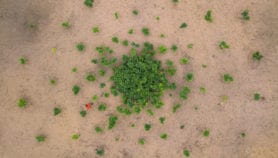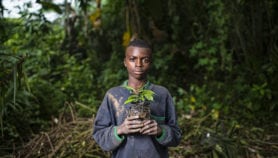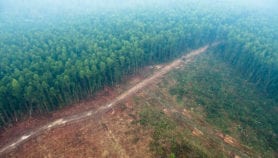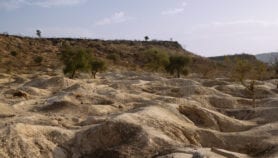15/06/23
Giraffes ‘more endangered than previously thought’

By: Dann Okoth
Send to a friend
The details you provide on this page will not be used to send unsolicited email, and will not be sold to a 3rd party. See privacy policy.
[NAIROBI] Giraffes in East Africa may be more endangered than previously thought, researchers reveal in a study calling for more focused conservation strategies to protect them.
Of particular concern is the lack of interbreeding among Masai giraffes, found in Tanzania and Southern Kenya and separated geographically by the Great Rift Valley, according to the analysis.
The area with its spectacular wildlife attracts substantial tourism and conservation revenues, supporting pastoral communities affected by poverty and mounting food insecurity.
“We therefore propose that conservation efforts should be focused on maintaining and developing corridors among populations within the eastern Masai giraffe population and within the western Masai giraffe population, as separate but coordinated efforts.”
Douglas Cavener, biology professor, Pennsylvania State University
The researchers from Penn State University in the US say the divided giraffe populations have not exchanged genetic material or interbred in more than a thousand years—and in some cases hundreds of thousands of years.
They suggest this could play a part in the decline of populations, also threatened by illegal hunting and habitat loss.
“We have shown compelling evidence that eastern and western Masai giraffes are reproductively isolated and have been so for thousands of years,” the study published 12 June in the journal Ecology and Evolution says.
As such, they should be treated as two distinct populations for conservation purposes, the researchers propose.
Giraffes under threat
Giraffe populations have declined sharply in the last 30 years, according to the International Union for Conservation of Nature (IUCN), with fewer than 100,000 of the animals remaining worldwide.
The number of Masai giraffes fell from 70,000 to 35,000 in that period and the species was declared endangered by the IUCN in 2019.
Those that remain are geographically separated by the steep cliffs of the Gregory Rift Valley escarpments in Tanzania and Kenya, dividing them into two populations, one west and one east, the researchers say.
The cliffs are formidable barriers to east-west dispersal and gene flow and the few remaining natural corridors through them are occupied by human settlements, the researchers explain.
“We therefore propose that conservation efforts should be focused on maintaining and developing corridors among populations within the eastern Masai giraffe population and within the western Masai giraffe population, as separate but coordinated efforts,” said Douglas Cavener, a biology professor at Penn State University and lead author of the study.
DNA tests
To assess the impact of the landscape on Masai giraffe gene flow, the researchers examined whole genome sequences of nuclear DNA and mitochondrial DNA (mtDNA) from animals located east (in the Tarangire ecosystem) and west (in the Serengeti ecosystem) of the escarpments in northern Tanzania.
The scientists collected fecal samples from 320 Masai giraffe and used remote biopsy darts to obtain tissue samples from 100 giraffes, all living in protected areas.
“Evidence from mtDNA variation, which measures female-mediated gene flow, suggests that females have not migrated across the GRE [Gregory Rift escarpments] between populations in the Serengeti and Tarangire ecosystems in the past 289,000 years,” the researchers say.
“The analysis of nuclear DNA variation suggests that male-mediated gene flow across the GRE has occurred more recently but stopped a few years ago.”
Giraffes on guard
Cavener noted that Masai giraffes likely numbered between 500,000 and two million a century ago and would have had a large impact on the ecology and food preferences of other animal communities.
“In some areas their density is still high enough that they remove much of the understory foliage, thus impacting other browsers such as kudu and impala,” Cavener told SciDev.Net.
“They also serve as important predator sentinels [guards] for other animals such as zebra and wildebeests that tend to congregate around giraffes.”
Julian Fennessy, conservation director at the Giraffe Conservation Foundation, who did not participate in the research, says the study advances knowledge on this unique species of giraffe.
“Such research provides a basis from which conservation management can be furthered,” he told SciDev.Net, adding: “It is the start, not the end product.”
He noted that since the IUCN assessment, Masai giraffe numbers have been increasing, pointing to a wildlife census by the Kenya Wildlife Service.
This piece was produced by SciDev.Net’s Global desk.















